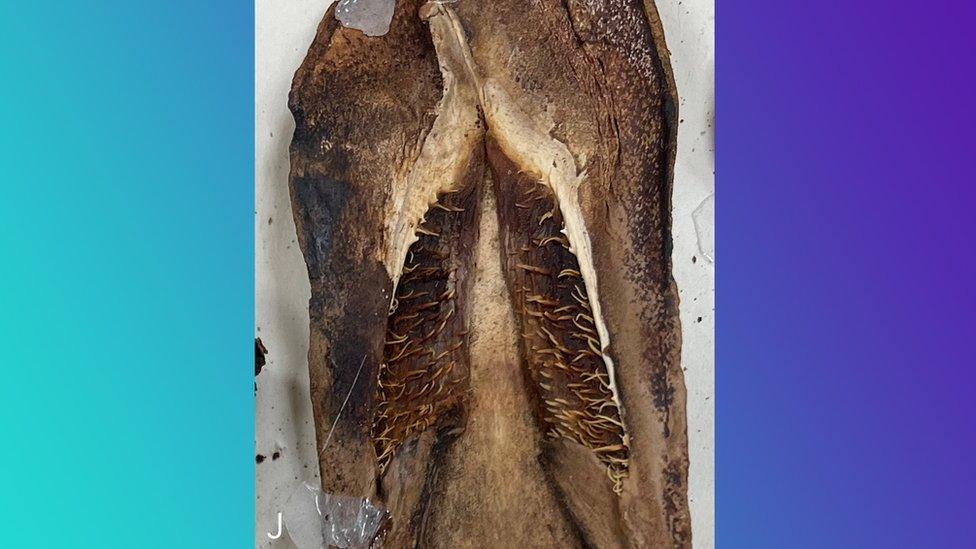Hydnora: Scientists make discovery about this unusual and smelly plant
- Published
- comments

The preserved new species of Hydnora
Two new species of Hydnora, an unusual and foul-smelling plant, have been identified by scientists.
Before there were eight types known to science but new research which looked at scientific writings and preserved specimens has concluded there are actually 10 species.
All 10 have key differences which mean they can be called new species.
What is a Hydnora?
Hydnora Africana flowers growing in South Africa
The Hydnora looks like something from another planet and has some very unusual features.
They are found in Africa and the Arabian peninsula.
Unlike most plants they don't have leaves which means they do not perform photosynthesis to get their food.
Instead they get their nutrients from the roots of another plant, which makes it parasitic.
The main body of the plant is a large, sprawling underground stem covered in "warts". For most of the year the plant is not seen at all.
This huge underground stem can causes structural damage and there was a report in Uganda that it almost caused a building to collapse.
It produces a disgusting smell which has been described as rotting meat and rubbish which is to attract beetles and other insects for pollination.
What did scientists discover?
The team at the Royal Botanic Gardens, Kew in London looked at all the species of Hydnora and realised that there were key differences which hadn't been noticed before.
This resulted in two new species from Ethiopia and Somalia being given scientific names.
One new species has been described (H. bolinii), and one species was split into two, have previously been lumped into another species (H. solmsiana).
Sebastian Hatt at the Royal Botanic Gardens at Kew told Newsround: "They're one of the world's weirdest and most wonderful plants and yet we know almost nothing them about them."
The team's next aim is to work with scientists from the countries where these plants are from to find out more about them and make sure they can be protected.
And there's hope that even more plants like this can be studied by scientists.
"This is not the only weird plant out there, there are many more to be discovered," Sebastian added.
